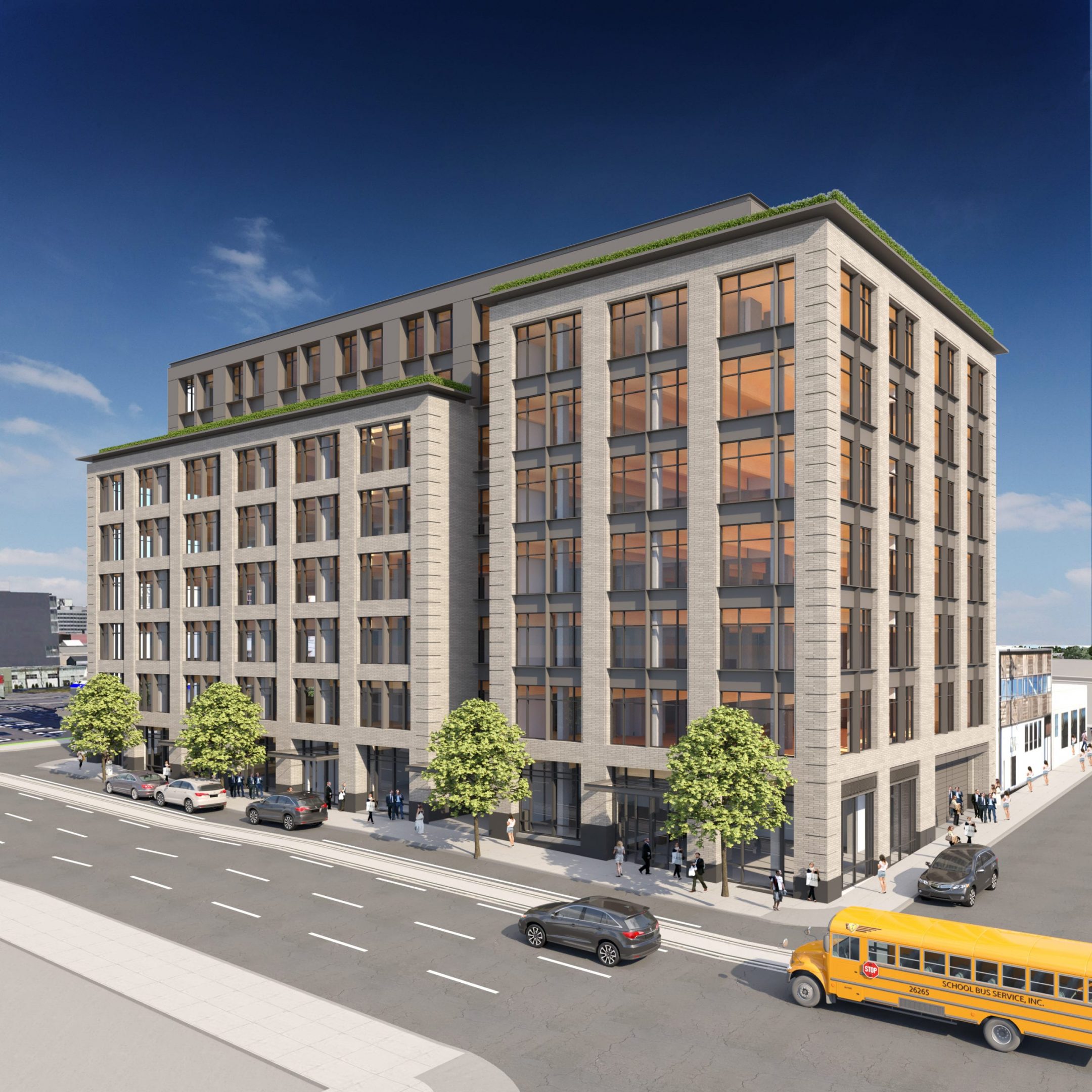
By Jeff Manning
Portland real estate developer Vanessa Sturgeon is once again staring a deep recession in the face and rolling the dice.
Sturgeon Development Partners announced Thursday it will build an eight-story office in Portland’s Central Eastside, despite the deadly pandemic and the economic ruin left in its path.
The announcement offers a whiff of normalcy amid an unrelenting stretch of economic news that ranges from bad to cataclysmic. In fact, Flatworks, as this project has been dubbed, could represent much more to the regional economy than your average real estate development.
The new structure, to be built on Southeast Grand Avenue between Southeast Ash and Pine streets, will be made with cross-laminated timber. It’s a much-ballyhooed technology that advocates say is a greener and more attractive alternative to traditional concrete and steel.
The expectations for cross-laminated timber are sky-high. Some boosters argue that it could reinvigorate the region’s timber industry.
No tenants have agreed to lease space, and Sturgeon wouldn’t say how much the building will cost. Sources in the industry estimated that buying the land, getting it permitted and then building the 130,000-square-foot structure could cost nearly $60 million.
Sturgeon is undeterred. It’s all eerily similar to 2008, when Sturgeon’s grandfather, Tom Moyer, launched construction of the Park Avenue West office tower downtown at the height of the financial crash and ensuing recession.
It was an enormous gamble. And Moyer appeared to lose. He shut down construction in April 2009 with little to show other than an enormous hole in the heart of the city. The project sat idle for years.
That was a difficult time for Sturgeon. There was a bitter falling-out with her uncles and an aunt, who went to court claiming they hadn’t received fair treatment. Her grandfather died in 2014.
But she didn’t give up on Park Avenue West, which finally opened in 2016.
Today, it’s a deadly virus, rather than widespread fraudulent lending in the financial industry, that has crashed the economy. Sturgeon is pressing forward.
“If we were putting up a standard office building, we probably would have thought twice,” she said. “We probably wouldn’t be moving forward. But this is such a special project with a special look, we never hesitated.”
Cross-laminated timber consists of wood panels, sometimes of enormous size, glued together. Promoters claim it is stronger structurally than alternative materials and leaves a much smaller carbon footprint that steel and concrete.
“You’ve got a product here that grows out of the earth with the power of the sun; it’s miraculous in a way,” said Mike Steffen, director of innovation at Walsh Construction in Portland. “You’re talking maybe 5% of the carbon intensity of steel and concrete.”
Cross-laminated timber buildings can also be faster to build. The panels are essentially prefabricated and ready to incorporate into the building. There are no concrete forms to build or hardening times.
There is another benefit, Steffen said, that is more intangible. Buying it is essentially supporting the locals. Virtually all of the manufacturers of cross-laminated timber and related products are in small timber towns in Oregon, Washington and British Columbia.
Sturgeon said she’s yet to select her manufacturer.
“I like the aesthetics better. It’s a more inspiring material,” said Stephen Alguier, president of Green Hammer, a Portland firm that specializes in green buildings.
The big downside of cross-laminated timber is cost. It is usually more expensive than concrete and steel, Steffen said.
There’s also fire safety. Cross-laminated timber is combustible. Some fire safety advocates have argued that tall wood buildings are dangerous to their occupants and to fire-fighters.
To build the Flatworks building eight stories tall, Sturgeon needed a variance from the Portland Bureau of Development Services.That required demonstrating the building boasted greater sprinkler protection than normally required.
Sturgeon said all of the money for the project was raised from individuals seeking the tax advantages offered to investors in so-called opportunity zones.
Tax law changes in 2017 allow investors in certain opportunity zones to defer taxes on earlier ventures and to shelter further gains from other opportunity zone projects. Though it was originally intended to boost investment in downtrodden areas, Portland’s downtown and most of the inner eastside was made an opportunity zone.
As for Sturgeon’s timing, real estate vet-eranssaid now could be an ideal time for a developer to strike: Start now and get the building finished in two or three years when the outlook is more positive, perhaps when a proven vaccine has been developed.
“A lot can happen in that time,” said Graham Taylor, senior vice president at CBRE in Portland. “When you’re an optimistic, forward-looking developer, the future is always bright. And I can’t imagine it getting any worse than right now.”
